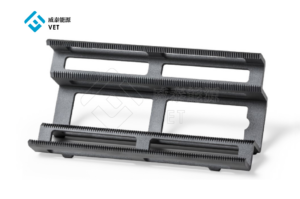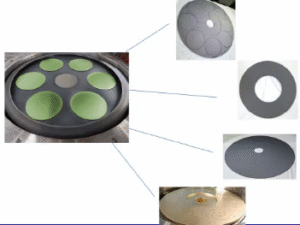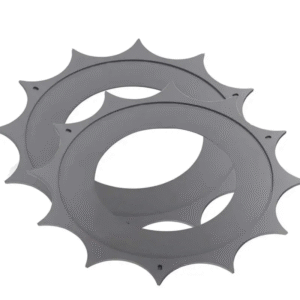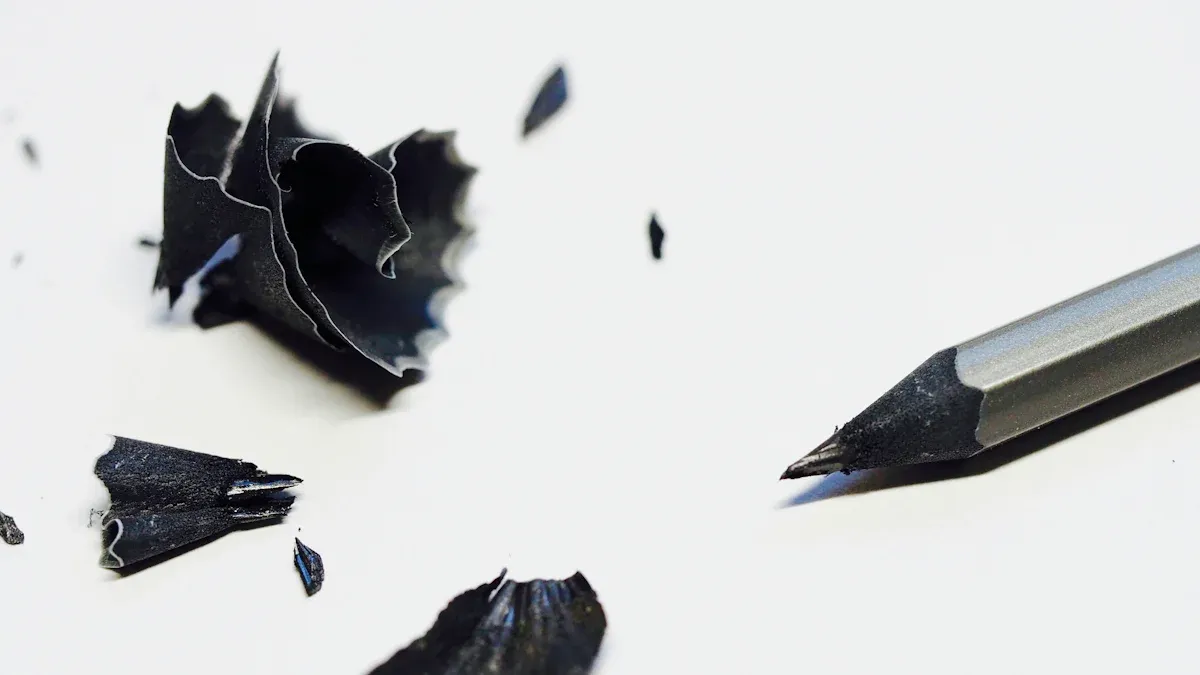
Industrial furnaces consume significant energy during operation, making efficiency a top priority for manufacturers. Optimizing components like the graphite heater can reduce energy consumption and improve performance. Using advanced materials, such as a graphite crucible or graphite mold, enhances heat management. These innovations contribute to sustainability and lower operational costs.
Key Takeaways
- Graphite heaters work well in very high heat, over 3000°C. They are useful for industries like space and metalwork.
- Graphite heaters heat up and cool down quickly. This speeds up heating and saves energy and time.
- Using pure graphite and better heater designs can save energy. It also helps furnaces last longer in factories.
Key Features and Benefits of Graphite Heaters

High-Temperature Performance
Graphite heaters excel in high-temperature environments, making them indispensable for industrial furnaces. Their ability to withstand temperatures exceeding 3000°C ensures consistent performance in demanding applications. Unlike other materials, graphite retains its structural integrity and thermal properties even under extreme heat. This characteristic minimizes the risk of deformation or failure during prolonged operations. Industries such as aerospace and metallurgy benefit significantly from this reliability, as it supports precision and efficiency in high-temperature processes.
Rapid Heat Absorption and Release
The thermal conductivity of graphite heaters allows for rapid heat absorption and release. This property ensures faster heating cycles, reducing energy consumption and operational downtime. The material’s low thermal expansion further enhances its efficiency by maintaining uniform heat distribution. This capability is particularly advantageous in processes requiring precise temperature control, such as semiconductor manufacturing. By optimizing heat transfer, graphite heaters contribute to both energy savings and improved product quality.
Durability in Extreme Conditions
Graphite heaters demonstrate exceptional durability in harsh industrial environments. They resist chemical corrosion, oxidation, and thermal shock, extending their operational lifespan. This resilience reduces maintenance requirements and minimizes production interruptions. For industries operating in aggressive atmospheres, such as chemical processing, the durability of graphite heaters ensures reliable performance. Their robust nature also supports cost-effective operations by lowering replacement and repair expenses.
Tip: Partnering with a trusted supplier like Ningbo VET Energy Technology Co., Ltd ensures access to high-quality graphite heaters tailored to specific industrial needs.
Challenges in Energy Efficiency for Industrial Furnaces
Industrial furnaces face several challenges that hinder energy efficiency. Addressing these issues is essential for reducing energy consumption and improving operational performance.
Heat Loss in Furnace Systems
Heat loss remains a significant obstacle in achieving energy efficiency. Poor insulation and outdated furnace designs often allow heat to escape, leading to wasted energy. This issue not only increases operational costs but also reduces the overall efficiency of the furnace. Implementing advanced insulation materials and optimizing furnace structures can minimize heat loss. For example, using materials with low thermal conductivity helps retain heat within the system, ensuring more efficient energy use.
Note: Regular inspections and maintenance of furnace components, such as seals and insulation layers, can further reduce heat loss and improve performance.
Material Wear and Maintenance Needs
Industrial furnaces operate under extreme conditions, which can cause rapid wear and tear of materials. Components like the graphite heater must withstand high temperatures and corrosive environments. Frequent maintenance or replacement of worn-out parts disrupts operations and increases costs. Selecting durable materials, such as high-quality graphite, can extend the lifespan of furnace components. This approach reduces downtime and ensures consistent performance.
A proactive maintenance schedule also plays a crucial role in addressing material wear. By identifying potential issues early, industries can prevent unexpected failures and maintain energy efficiency.
Inefficiencies in Furnace Design
Outdated furnace designs often fail to meet modern energy efficiency standards. Inefficient heat distribution and poor airflow management contribute to higher energy consumption. Upgrading to advanced designs that incorporate uniform heat distribution and precision control systems can significantly improve efficiency. For instance, integrating a graphite heater with optimized geometry ensures even heat transfer across the furnace chamber.
Tip: Collaborating with innovative solution providers like Ningbo VET Energy Technology Co., Ltd can help industries adopt cutting-edge furnace designs tailored to their specific needs.
Optimization Strategies for Graphite Heaters
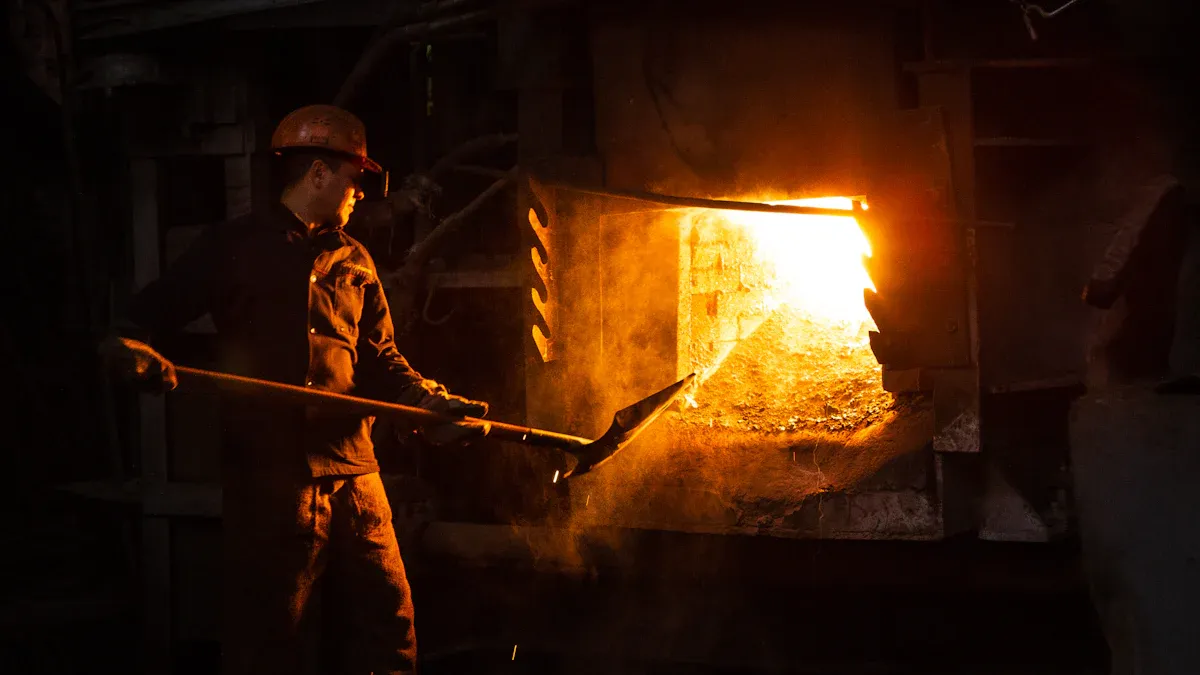
Advanced Material Selection
Selecting the right materials is crucial for optimizing the performance of a graphite heater. High-purity graphite offers superior thermal conductivity and resistance to extreme temperatures. These properties ensure efficient heat transfer and prolonged operational life. Industries often prioritize materials with low impurity levels to minimize contamination risks during sensitive processes, such as semiconductor manufacturing.
Material selection also involves considering the specific operating environment. For instance, furnaces exposed to corrosive gases require graphite with enhanced oxidation resistance. Coated or treated graphite materials can further improve durability and reduce maintenance needs. By tailoring material properties to application requirements, industries can achieve significant energy savings and operational efficiency.
Tip: Collaborating with experts like Ningbo VET Energy Technology Co., Ltd ensures access to advanced graphite materials designed for optimal furnace performance.
Enhanced Heater Design for Uniform Heat Distribution
The design of a graphite heater plays a pivotal role in achieving uniform heat distribution. Uneven heating can lead to energy inefficiencies and inconsistent product quality. Engineers address this challenge by optimizing the geometry and arrangement of heating elements. For example, spiral or grid-like designs promote even heat transfer across the furnace chamber.
Advanced manufacturing techniques, such as precision machining, enable the production of heaters with intricate designs. These innovations ensure that heat is distributed evenly, reducing energy waste and enhancing process reliability. Industries that require precise temperature control, such as aerospace and metallurgy, benefit greatly from these design improvements.
Note: Regular performance evaluations of heater designs can help identify areas for further optimization, ensuring consistent energy efficiency.
Integration of Precision Control Systems
Precision control systems are essential for maximizing the efficiency of graphite heaters. These systems monitor and regulate temperature, ensuring that the furnace operates within optimal parameters. Advanced sensors and controllers provide real-time data, enabling quick adjustments to maintain consistent heating.
Automation further enhances control by reducing human error and improving response times. For instance, integrating programmable logic controllers (PLCs) allows for precise temperature management in complex processes. This level of control not only improves energy efficiency but also extends the lifespan of furnace components by preventing overheating or thermal stress.
Callout: Industries can leverage the expertise of Ningbo VET Energy Technology Co., Ltd to implement cutting-edge control systems tailored to their specific needs.
Role of Simulation Tools in Optimization
Modeling Thermoelectric Field Distribution
Simulation tools play a vital role in analyzing thermoelectric field distribution within industrial furnaces. These tools enable engineers to visualize how heat and electricity interact across the furnace chamber. By modeling these interactions, they can identify areas of uneven heating or excessive energy loss. Advanced software, such as COMSOL Multiphysics, calculates eddy currents and temperature gradients to optimize the performance of components like the graphite heater. This process ensures uniform heat distribution, which is essential for maintaining energy efficiency and product quality.
Predicting Energy Efficiency Improvements
Predictive simulations provide valuable insights into potential energy savings. Engineers use these tools to test various furnace configurations and material properties before implementation. For example, simulations can evaluate the impact of adjusting circuit frequency on energy coupling efficiency. This approach minimizes trial-and-error experimentation, saving time and resources. The ability to predict energy efficiency improvements allows industries to make informed decisions about furnace upgrades and operational strategies. These predictions also help reduce operational costs and support sustainability goals.
Case Studies of Successful Implementations
Several industries have successfully optimized their furnaces using simulation tools. In one case, a manufacturer integrated COMSOL Multiphysics to refine the design of graphite heaters. The software revealed inefficiencies in heat transfer and suggested modifications to heater geometry. After implementing these changes, the furnace achieved uniform heating and reduced energy consumption by 15%. Another example involved a semiconductor company that used simulations to enhance temperature control systems. The results improved product consistency and lowered production costs. These case studies highlight the transformative impact of simulation tools on industrial furnace operations.
Optimizing the graphite heater is essential for achieving energy-efficient industrial furnaces. Industries can enhance performance by selecting advanced materials, improving heater designs, and utilizing simulation tools. These strategies reduce costs and support sustainability. Ningbo VET Energy Technology Co., Ltd provides innovative solutions tailored to industrial needs, ensuring reliable and efficient furnace operations.
FAQ
What makes graphite heaters energy-efficient?
Graphite heaters excel in thermal conductivity and heat retention. These properties minimize energy loss, ensuring efficient heat transfer and reduced operational costs.
How can industries extend the lifespan of graphite heaters?
Industries can extend heater lifespan by selecting high-purity graphite, applying protective coatings, and conducting regular maintenance to prevent wear and oxidation.
Why are simulation tools essential for furnace optimization?
Simulation tools predict energy efficiency improvements and identify design flaws. They enable precise adjustments, ensuring uniform heat distribution and optimal furnace performance.


